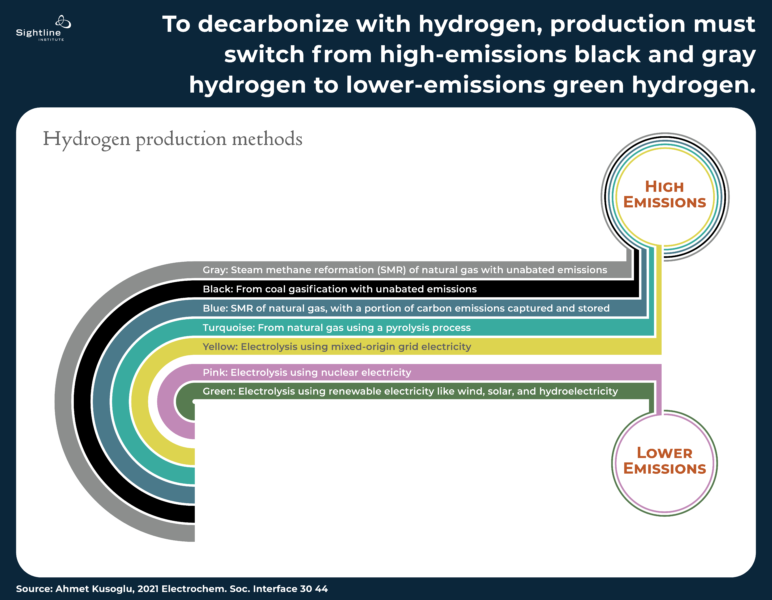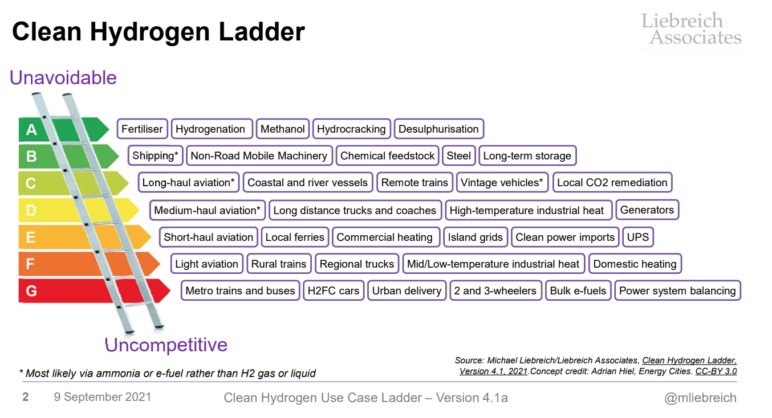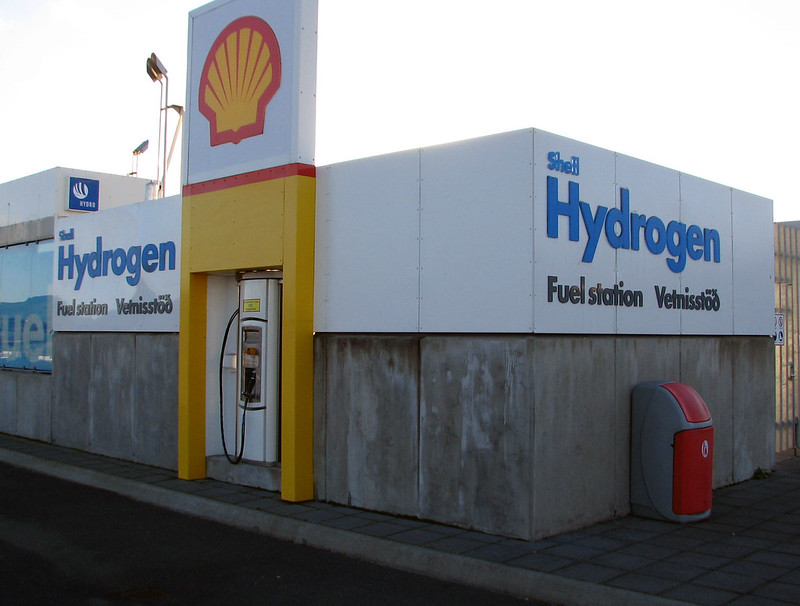Renewable electricity coupled with energy efficiency will be the powerhouses lowering carbon emissions over the next decade and beyond as Cascadia achieves a net-zero economy. For hard-to-electrify sectors of the economy, however, clean fuels are needed.
Hydrogen could be a vital clean alternative to fossil fuels to meet 2050 greenhouse gas emissions targets, but only if it is produced using renewable electricity and used for sectors that are hard to decarbonize. This primer outlines what hydrogen is, the different types of hydrogen production methods, and the best ways to use hydrogen in a decarbonizing economy.
Hydrogen Basics
Hydrogen is the most abundant element in the universe. A building block of water and of hydrocarbons like methane, hydrogen is found in almost all plant matter. When burned for fuel, hydrogen is far less polluting than fossil fuel alternatives, producing mostly water vapor and some nitrogen oxide (NOx) pollutants. Because virtually no gaseous hydrogen naturally exists on Earth, people must produce it.
Hydrogen “Colors” Based on Production Methods
Hydrogen is a colorless gas, but energy experts assign a rainbow of colors to it based on the different methods by which corporations produce it. Whether they produce hydrogen using fossil fuel-based energy, renewables, or some combination of these, has tremendous implications for its potential as a clean fuel. Today, some 98 percent of US hydrogen is “black” or “gray,” meaning produced from fossil fuels with no emissions controls.

High-Emissions Hydrogen Types
- Gray Hydrogen is produced from natural gas using a process called steam methane reformation (SMR).1 The process’s resulting CO2 is released to the atmosphere. Gray hydrogen has high emissions of climate-changing greenhouse gases.
- Black Hydrogen is produced from coal using a process called gasification.2 Black hydrogen has high emissions of climate-changing greenhouse gases.
- Blue Hydrogen is produced exactly like gray hydrogen but coupled with carbon capture and sequestration (CCS)3 technology. Blue hydrogen has high emissions of climate-changing greenhouse gases.
- Turquoise Hydrogen is produced from natural gas using a pyrolysis4 process. Turquoise hydrogen has high emissions of climate-changing greenhouse gases.
- Yellow Hydrogen is produced from water using electrolysis. Mixed-origin grid energy is the electricity source. Until the grid is predominately powered by renewable sources, yellow hydrogen has high emissions of climate-changing greenhouse gases.
Lower-Emissions Hydrogen Types
- Green Hydrogen is produced from water using electrolysis.5 The electrical power for this process comes from zero-carbon sources like wind, solar, and hydroelectricity. Green hydrogen has lower emissions.
- Pink Hydrogen is produced from water using electrolysis. Nuclear energy is the electricity source. Pink hydrogen has lower emissions.
The only type of hydrogen that could meaningfully contribute to the region’s decarbonization goals is green hydrogen, given that Cascadia lacks nuclear energy sources. Despite successful efforts by the oil and gas industry to define blue hydrogen as “clean hydrogen” in the 2021 US federal infrastructure law, blue hydrogen emissions are a mere 9 to 12 percent less than those of gray hydrogen and 20 percent higher than burning natural gas for heat.
Hydrogen Uses Are Niche and Few
The US today produces about 10 million metric tons of gray and black hydrogen annually, amounting to about 1 percent of the country’s energy consumption. This hydrogen is used for a handful of industrial processes like petrochemical refining, metallurgy, and manufacturing ammonia and fertilizer. The carbon footprint of this hydrogen is about 93 million metric tons of CO2, or about 1.8 percent of the US energy-related CO2. Eliminating these emissions by switching to green hydrogen is a promising opportunity.
However, many other sectors are not a good fit for green hydrogen. The Clean Hydrogen Ladder (shown below), developed by Michael Liebreich of BloombergNEF, grades the use cases for hydrogen. At the top of the ladder are the uses best matched to green hydrogen’s value proposition—principally those applications currently using hydrogen (from any production method, not just green). The bottom rungs host the least competitive green hydrogen strategies: domestic heating, mid/low-temperature industrial heat, and most transportation fuels. In between are use cases for which hydrogen might make sense if hydrogen outcompetes other low-carbon alternatives like biofuels and electrification.

Other experts agree that green hydrogen will be an important low-carbon fuel but only for niche industries and secondary to direct electrification. Green hydrogen infrastructure should be anchored around industrial, port, and power system demand, advises German think tank Agora Energiewend.
Despite hydrogen’s limitations, Cascadia’s hydrogen proponents are eager to expand its use to nearly every corner of the economy—including corners that may be ill-suited for hydrogen. Already, Vancouver-based First Hydrogen is building a fuel cell electric passenger vehicle; three Washington-based aerospace corporations are working on a hydrogen-powered regional aircraft; Twin Transit and Port of Chehalis are building a hydrogen refueling station for buses; and two large gas utilities in the region, NW Natural and Puget Sound Energy, are piloting hydrogen for home heating. Competitive markets will likely pick the winners and losers for hydrogen for any commercial offerings. However, elected leaders and regulators must craft careful policy around hydrogen use by utilities to ensure long-term benefits for ratepayers and prioritization of climate goals.
Notes:
2. Coal gasification is a thermal process in which coal is heated to very high temperatures (more than 700°C), without combustion, with a controlled amount of oxygen and/or steam. This process produces carbon monoxide (CO), which then reacts with water to form CO2 and hydrogen.
[button link='{“url”:”https://www.sightline.org/2022/05/24/hydrogens-dead-end-home-heating/”,”title”:”View Full Report”}’ color=”green”]

